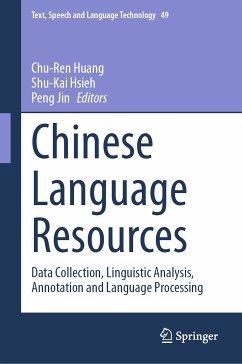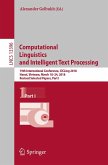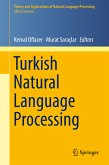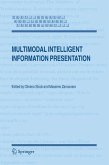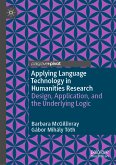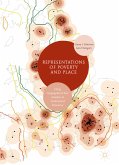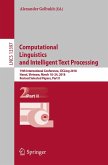Chinese Language Resources (eBook, PDF)
Data Collection, Linguistic Analysis, Annotation and Language Processing
Redaktion: Huang, Chu-Ren; Jin, Peng; Hsieh, Shu-Kai


Alle Infos zum eBook verschenken

Chinese Language Resources (eBook, PDF)
Data Collection, Linguistic Analysis, Annotation and Language Processing
Redaktion: Huang, Chu-Ren; Jin, Peng; Hsieh, Shu-Kai
- Format: PDF
- Merkliste
- Auf die Merkliste
- Bewerten Bewerten
- Teilen
- Produkt teilen
- Produkterinnerung
- Produkterinnerung

Hier können Sie sich einloggen

Bitte loggen Sie sich zunächst in Ihr Kundenkonto ein oder registrieren Sie sich bei bücher.de, um das eBook-Abo tolino select nutzen zu können.
Based on the accumulation of research experience and knowledge over the past 30 years, this volume lays out the research issues posed by the construction of various types of Chinese language resources, how they were resolved, and the implication of the solutions for future Chinese language processing research.This volume covers 30 years of development in Chinese language processing, focusing on the impact of conscientious decisions by some leading research groups. It focuses on constructing language resources, which led to thriving research and development of expertise in Chinese language…mehr
- Geräte: PC
- ohne Kopierschutz
- eBook Hilfe
- Größe: 23.94MB
![Computational Linguistics and Intelligent Text Processing (eBook, PDF) Computational Linguistics and Intelligent Text Processing (eBook, PDF)]() Computational Linguistics and Intelligent Text Processing (eBook, PDF)65,95 €
Computational Linguistics and Intelligent Text Processing (eBook, PDF)65,95 €![Turkish Natural Language Processing (eBook, PDF) Turkish Natural Language Processing (eBook, PDF)]() Turkish Natural Language Processing (eBook, PDF)73,95 €
Turkish Natural Language Processing (eBook, PDF)73,95 €![Multimodal Intelligent Information Presentation (eBook, PDF) Multimodal Intelligent Information Presentation (eBook, PDF)]() Multimodal Intelligent Information Presentation (eBook, PDF)113,95 €
Multimodal Intelligent Information Presentation (eBook, PDF)113,95 €![Applying Language Technology in Humanities Research (eBook, PDF) Applying Language Technology in Humanities Research (eBook, PDF)]() Barbara McGillivrayApplying Language Technology in Humanities Research (eBook, PDF)53,95 €
Barbara McGillivrayApplying Language Technology in Humanities Research (eBook, PDF)53,95 €![Spreading Activation, Lexical Priming and the Semantic Web (eBook, PDF) Spreading Activation, Lexical Priming and the Semantic Web (eBook, PDF)]() Michael Pace-SiggeSpreading Activation, Lexical Priming and the Semantic Web (eBook, PDF)40,95 €
Michael Pace-SiggeSpreading Activation, Lexical Priming and the Semantic Web (eBook, PDF)40,95 €![Representations of Poverty and Place (eBook, PDF) Representations of Poverty and Place (eBook, PDF)]() Laura L PatersonRepresentations of Poverty and Place (eBook, PDF)69,95 €
Laura L PatersonRepresentations of Poverty and Place (eBook, PDF)69,95 €![Computational Linguistics and Intelligent Text Processing (eBook, PDF) Computational Linguistics and Intelligent Text Processing (eBook, PDF)]() Computational Linguistics and Intelligent Text Processing (eBook, PDF)65,95 €
Computational Linguistics and Intelligent Text Processing (eBook, PDF)65,95 €-
-
-
Dieser Download kann aus rechtlichen Gründen nur mit Rechnungsadresse in A, B, BG, CY, CZ, D, DK, EW, E, FIN, F, GR, HR, H, IRL, I, LT, L, LR, M, NL, PL, P, R, S, SLO, SK ausgeliefert werden.
- Produktdetails
- Verlag: Springer International Publishing
- Seitenzahl: 662
- Erscheinungstermin: 18. Dezember 2023
- Englisch
- ISBN-13: 9783031389139
- Artikelnr.: 69676861
- Verlag: Springer International Publishing
- Seitenzahl: 662
- Erscheinungstermin: 18. Dezember 2023
- Englisch
- ISBN-13: 9783031389139
- Artikelnr.: 69676861
- Herstellerkennzeichnung Die Herstellerinformationen sind derzeit nicht verfügbar.
